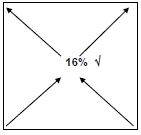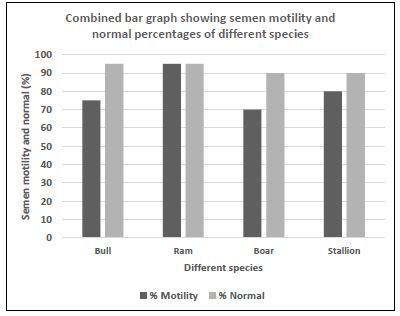AGRICULTURAL SCIENCES GRADE 12 MEMORANDUM - NSC PAST PAPERS AND MEMOS JUNE 2022
Share via Whatsapp Join our WhatsApp Group Join our Telegram GroupSECTION A
QUESTION 1
1.1
1.1.1 C ??
1.1.2 B ??
1.1.3 D ??
1.1.4 B ??
1.1.5 C ??
1.1.6 D ??
1.1.7 A ??
1.1.8 B ??
1.1.9 A ??
1.1.10 D ??
(10 x 2) (20)
1.2
1.2.1 B only ??
1.2.2 A only ??
1.2.3 None ??
1.2.4 A only ??
1.2.5 Both A and B ??
(5 x 2) (10)
1.3
1.3.1 Concentrates ??
1.3.2 Zoonotic ??
1.3.3 Meiosis ??
1.3.4 Hermaphroditism ??
1.3.5 Cryptorchidism ??
(5 x 2) (10)
1.4
1.4.1 Fodder flow / Feed flow ?
1.4.2 Endemic ?
1.4.3 Acrosome ?
1.4.4 Dystocia ?
1.4.5 Infertility ? (5 x 1)
(5)
TOTAL SECTION A: 45
SECTION B
QUESTION 2: ANIMAL NUTRITION
2.1 A representation of the alimentary canal of a farm animal
2.1.1 Classification of the alimentary canal of farm animals
- DIAGRAM A: Ruminants ?
- DIAGRAM B: Non-ruminants ? (1)
2.1.2 Identification of letters
- E: Crop ?(1)
- J: Oesophagus ?(1)
2.1.3 Identification of the alimentary canal of a young ruminant
DIAGRAM C ? (1)
2.1.4 Justification
- Very large abomasum compared to rumen ?
- Presence of oesophageal groove ?
- Under-development of fore stomach ? (Any 1 x 1) (1)
2.1.5 Identification of the letters:
- H ?(1)
- F ?(1)
- A ?(1)
2.2 Schematic representation of types of feeds
2.2.1 Roughages ? (1)
2.2.2 Concentrates ? (1)
2.2.3 Silage/soilage/green lucerne/green forage ? (Any 1 x 1) (1)
2.2.4 Maize meal/oatmeal/barley meal/rye meal/sorghum meal ? (Any 1 x 1) (1)
2.3 Deficiency diseases:
2.3.1 Goitre ? (1)
2.3.2 Excessive bleeding/Poor blood clotting ? (1)
2.3.3 Parakeratosis ?(1)
2.4 Energy production in farm animals
2.4.1 Units to express energy.
Joules (j)/Kilojoules (Kj) ? (1)
2.4.2 TWO important uses of Net Energy
- Maintenance ?
- Production ? (2)
2.4.3 TWO purposes of calculating energy value of feed
- To determine animal’s diet ?
- To determine feeding standards ?
- To formulate rations ? (Any 2 x 1) (2)
2.5 Compounding rations
2.5.1 The Pearson square calculation
(Barley meal): 9% 23 ? (parts) (39 – 16 = 23)
16% ?
(Soya oilcake meal):39% 7 ? (parts) (16 – 9 = 7)
The ratio of barley meal to soya oilcake meal is 23 : 6 ?(4)
2.5.2 Percentage of soya oilcake meal
23 + 7 = 30 ?
7/30 x 100 ?
23,3% ?
(3)
2.6
Calculating coefficient of digestibility of the hay
Dry feed intake:
10/100 x 15 kg = 1,5 kg therefore, 15 kg – 1,5 kg = 13,5 kg ?
Dry material intake (kg) – Dry mass of manure x 100
Dry material intake (kg) 1 ?
13,5 kg – 3 kg x 100 ?
13,5 kg
77,8% ??
(5)
2.7 TWO importance fodder flow
- Safe use of resources ?
- Meeting the animal’s requirements ?
- For positive margin over feed costs ?
- Allowing livestock enterprise to run smoothly / Manageability / Flexible management ?
(Any 2 x 1) (2)
[35]
QUESTION 3: ANIMAL PRODUCTION, PROTECTION AND CONTROL
3.1 Animal production systems
3.1.1 Identification production systems
- FARMER A: Extensive production system ?
- FARMER B: Intensive production system ? (2)
3.1.2 Justification for QUESTION 3.1.1
FARMER A: Extensive production system
- Few animals occupied a large area/low density/low stocking rate ?
- Low capital investment ?
- Low output per unit area ? (Any 1 x 1)
(1)
FARMER B: Intensive production system
- Many animals in small area/high population density ?
- High capital investment/high inputs ?
- High output per unit area ? (Any 1 x 1)
(1)
3.1.3 Differentiation between subsistence and commercial farming systems
Subsistence farming
Farming in small quantities to meet the needs of the family and sell the surplus ?
(1)
Commercial farming
Farming in large quantities in order to make profit ?
(1)
3.2 THREE measures to reduce heat stress in cattle under intensive production conditions
- Provision of shelter ?
- Use of air conditioners/Misting/Fans ?
- Provision of enough water ? (Any 3 x 1) (3)
3.3 Identification of parts of the animal’s space
3.3.1 Flight zone: PART C ? (1)
3.3.2 Blind spot: PART A ? (1)
3.3.3 Point of balance: PART B ? (1)
3.4 Animal handling
3.4.1 Identification of the equipment labelled A
Plywood board ? (1)
3.4.2 THREE reasons for handling pigs by farmers
- Vaccination ?
- Marking ?
- Dosing ?
- Selection for breeding ?
- Marketing/Shows ?
- Reproductive processes/Mating/AI/ET/NT ?
- Giving birth ?
- Sanitation/cleaning ?
- Hoof trimming ?
- Health examination ?
(Any 3 x 1) (3)
3.5 Equipment used on the farm.
3.5.1 Name of the management practice
- Castration ? (1)
3.5.2 Suitability of the tools
- Adult farm animals: DIAGRAM B ? (1)
- Younger farm animals: DIAGRAM A ? (1)
3.6 Scenario
3.6.1 Name of the disease
- Rift Valley Fever (RVF) ? (1)
3.6.2 Identification
- Vector: Mosquito ? (1)
- Pathogen: Virus ? (1)
3.6.3 Extract from the scenario
If a farmer suspects that some animals are infected, authorities should be alerted immediately/Reporting to authorities when suspecting infection ? (Any 1 x 1)
(1)
3.6.4 Suggest TWO economic implications of animal diseases to the farmer
- Banning of exports and imports/Decrease in international trade ?
- Decreased production/loss of income ?
- High treatment/vaccination costs to control/prevent diseases ? (Any 2 x 1)
(2)
3.7 Schematic representation for the life cycle of a parasite.
3.7.1 Identification of the parasite
- Blowfly ? (1)
3.7.2 Indication of the most harmful stage in the life cycle
- Larval stage ? (1)
3.7.3 Identification of the condition that cause wounds
- Blowfly strike/attack ? (1)
3.7.4 Term used for the removal of wool around the tail
- Crutching ? (1)
3.7.5 THREE non-chemical management practices
- Tail docking ?
- Lipping and cleaning of wounds ?
- Correct timing of shearing and crutching ?
- Lambing time after shearing ?
- Breeding and selection of resistant breeds ? (Any 3 x 1) (3)
3.8 Indication of roles
- Import and export bans: State ? (1)
- Research: State ? (1)
- Sanitation: Farmer ? (1)
[35]
QUESTION 4: ANIMAL REPRODUCTION
4.1 The reproductive system of a cow and a bull
4.1.1 Identification of parts
- F: Urethra ?
- G: Uterus/Uterine body ?
- K: Oviduct/Fallopian tubes ? (3)
4.1.2 Matching the functions with a letter
- H ? (1)
- K ? (1)
- J ? (1)
- I ? (1)
- C ? (1)
- A ? (1)
4.2 Sperm cell
Indication of the letters
- D ? (1)
- C ? (1)
- B ? (1)
4.3 Graph
4.3.1 Bar graph
Criteria/rubric/marking guidelines
- Correct heading ?
- X-axis – correctly calibrated with label (Species) ?
- Y-axis – correctly calibrated with label (Motility and normal) ?
- Correct units (%) ?
- Combined bar graph
- Accuracy (80 % and above correct plotting) ?
(6)
4.3.2 Identification of the species with the highest concentration
Ram ? (1)
4.4 Stages of mating
4.4.1 Arranging the stages of mating sequentially
- C ?
- A ?
- D ?
- B ?
(4)
4.4.2 The stage of mating not listed
- Courtship ? (1)
4.4.3 Indication of the stage
- Oestrus ? (1)
4.4.4 ONE sign of a cow on heat
- Vulva is swollen with reddish mucus membranes ?
- Mucus strings visible from the vulva ?
- Jumps on other cows / allows the cows to jump on her ?
- Scratch marks and dirt on the side and back ?
- Allows mating with a bull ? (Any 1 x 1) (1)
4.5 Embryo transfer:
4.5.1 Identify of the reproduction procedure
Embryo Transfer (ET) ? (1)
4.5.2 Naming of the farm animal A and farm animal B
- Farm animal A: Donor cow ?
- Farm animal B: Recipient cow ? (2)
4.5.3 Naming of the processes C and D
- C: Superovulation ?
- D: Embryo flushing ? (2)
4.6 Milk production curve
4.6.1 Name of the curve
- Lactation curve / Milk production curve ? (1)
4.6.2 Name of point A
- Peak period/peak stage ? (1)
4.6.3 Hormones
- Prolactin ? (1)
- Oxytocin ? (1)
[35]
TOTAL SECTION B: 105
GRAND TOTAL: 150

